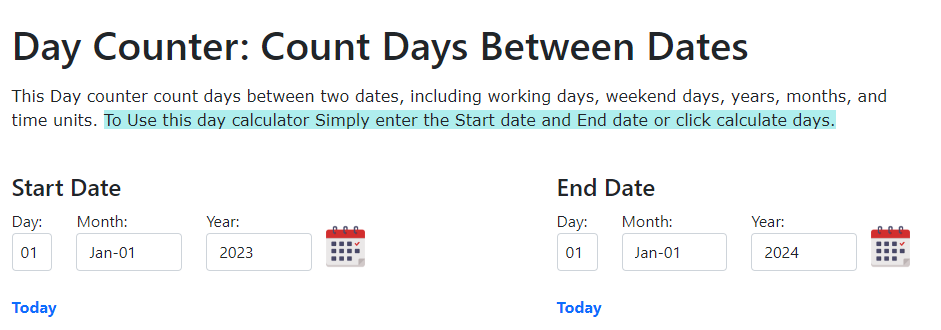In our fast-paced world, where digital calendars, smartphones, and smartwatches remind us of every appointment, event, and birthday, it’s hard to imagine a time when tracking days was a complex task. Yet, the evolution of day counter is a testament to humanity’s need to measure and mark the passage of time.
1. The Dawn of Timekeeping
From ancient civilizations to modern societies, the concept of time has been integral to human existence. The sun, moon, and stars provided the earliest methods of tracking time. Ancient sundials, water clocks, and candle clocks were among the earliest instruments used to measure hours, days, and seasons.
2. The Birth of Day Counters
As societies became more complex, there arose a need for more accurate and consistent methods of counting days. The Babylonians, for instance, developed an intricate lunar calendar that divided the year into 12 months based on the cycles of the moon. They used a system of arithmetic to determine the length of months and years.
However, one of the most influential systems of day counting emerged from the Mayan civilization. The Mayans developed a complex calendar system that combined a 260-day ritual calendar (Tzolk’in) with a 365-day solar calendar (Haab’). This resulted in a cycle known as the Calendar Round, which repeated every 52 years.
3. The Gregorian Calendar and Day Counters
Fast forward to the 16th century, and we encounter the Gregorian calendar, named after Pope Gregory XIII. This calendar, which is widely used today, was introduced to correct the discrepancies in the older Julian calendar. The Gregorian calendar standardized the length of months and introduced the concept of leap years to account for the extra time it takes the Earth to orbit the sun.
With the establishment of the Gregorian calendar, day counters became more sophisticated. Pocket-sized calendars, wall calendars, and desktop organizers became commonplace, allowing individuals to track days, weeks, and months with ease.
4. Digital Revolution and Day Counters
The advent of computers and digital technology revolutionized the way we track time. Digital day counters, integrated into software applications and electronic devices, offered unprecedented accuracy and convenience. From simple date displays on computers to sophisticated calendar apps on smartphones, the digital age transformed the way we interact with time.
5. The Future of Day Counters
As we look ahead, the evolution of day counters continues. With the rise of wearable technology, such as smartwatches and fitness trackers, day counters have become more personalized and integrated into our daily lives. These devices not only track days but also monitor our activities, sleep patterns, and health metrics, offering a holistic view of our well-being.
Moreover, with advancements in artificial intelligence and data analytics, day counters are poised to become even more intelligent and predictive. Imagine a day counter that not only reminds you of upcoming events but also suggests optimal times for activities based on your habits and preferences.
Conclusion
The journey of day counters, from ancient sundials to modern digital devices, is a fascinating reflection of humanity’s relentless pursuit of measuring and understanding time. As we continue to innovate and evolve, day counters will undoubtedly play a pivotal role in shaping our relationship with time, ensuring that we make the most of every moment.
Whether it’s marking a special occasion, tracking a fitness goal, or simply counting the days until a long-awaited vacation, day counters serve as a timeless reminder of the precious gift of time and the infinite possibilities that lie ahead.





